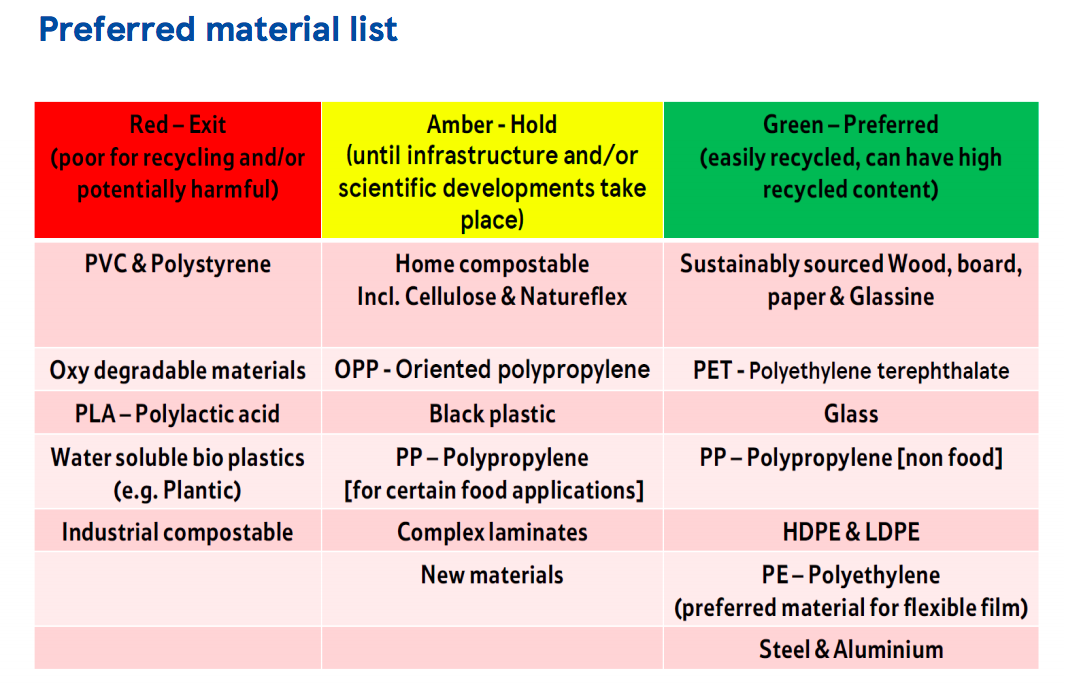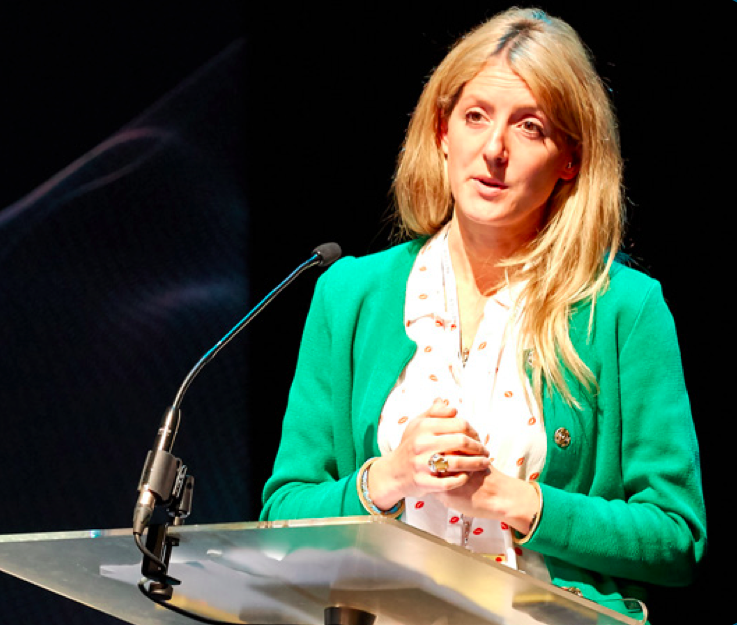“We’re all involved in an industry whose main remit is to spread joy or share pain through the sending of greeting cards – but as a caring industry we have also collectively taken on the responsibility of doing this important role while being mindful of the impact on the greater environment,” Adam Osborne, Woodmansterne’s director of operations and IT told PG Buzz, fresh from the RECOUP Plastics Recycling Conference as well as the GCA AGM and Conference which made the environment a top agenda issue. “Human relationships are complicated, but so too are the confusing, often conflicting, ever unfurling advice and developments on the environmental front connected to all consumer products, greeting cards included,” added Adam.
As part of the greeting card publisher’s pledge to update its environmental policies, Adam attended the recent Plastics Recycling Conference, organised by charitable industry body, RECOUP (RECycling Of Used Plastics) at which during the grand finale panel discussion he asked the expert panelists what they thought of biodegradable, compostable, digestible materials, in relation to the film and bags used to wrap greeting cards.

Here, Adam shares his thoughts:
“Like so many others, I listened intently to the presentations made by Sue Morrish of The Eco-friendly Card Co and GCA president and UKG director Ceri Stirland at the GCA AGM and Conference.
While I agree with the all the sentiments shared on reducing single use plastic waste, from the panelists’ responses to my question at the RECOUP Plastics Recycling Conference, I don’t feel that a move to bags made from PLA [a biodegradable and bioactive thermoplastic aliphatic polyester derived from renewable resources, such as corn starch] is the answer at the moment.
The feedback I received from the experts at the RECOUP event included:
- Plastic films including Polypropylene are perfectly recyclable. In fact, even metalised crisp packets are recyclable. The issues surrounding transportation of the lightweight, but high volume material is well-known, and compared with the economic cost of producing the polymer, recycling isn’t as attractive (for now).
- We are, as a nation ‘lazy’ when it comes to recycling. If we see something that says ‘biodegradable’ or ‘compostable’ on it, the general public assume it is like a banana skin, and have a propensity to not put it in the bin thinking it will degrade on its own. In the open environment, PLA materials cause problems with litter, and animal injury through ingestion.
- Compostable collections cease during the winter months. Not enough green material (eg grass clippings) is produced to warrant making compost, let alone collecting it from the kerbside. Depending on the collection vessel, Christmas cards wrapped in PLA will find their packaging has a propensity to end up in the general waste, as the compost bins are not being used
- The biggie: Most green waste Material Recovery Facilities (MRFs) do not have Near Infra-Red technology. They have simpler technology, sometimes just hand-checking, and if they see a bit of what looks like plastic go past on a conveyor, they do not have the time to examine it and determine if it is compostable, or biodegradable, or digestible, or if it is ‘true’ plastic. They hook it out as they can’t risk it being plastic! So, all the good intentions are lost because our industry’s clear bags look too much like plastic. The expensively produced PLA film ends up in landfill, or being burned in an Energy From Waste plant or Thermal Conversion plant anyway. Sue has even said in point 4 that “post-consumer film is not being recycled, so it’s not possible to contaminate something that doesn’t exist.” The same thing exists for compostable recovery streams too. MRFs are not against bio-plastics, but would want one, consistent type to be used across the country (i.e. chose compostable OR digestible OR biodegradable) that was easily identifiable with no confusion to them, or the consumer that is trying to do their bit for the environment.
Expanding the last point a little, I recently returned from a week in Malta. I noted that all the plastic bags I used for my shopping back to the holiday home were made from compostable material, but to be absolutely sure that they were recycled correctly, the ‘compostable’ logos printed on them were absolutely massive. I guess this guarantees that they make it through to the correct method of recycling, but I can’t see it working on greeting cards.
There is one more elephant in the room, and it’s that some retailers will not go near PLA, or want it exited from all of their products. Tesco is one such retailer, and when a large grocer takes a stand, others tend to follow. Tesco’s packaging materials listing still shows PLA, industrially compostable materials and oxy-degradable materials as ones the grocer wants rid of, and interestingly OPP (the polypropylene used widely cellowrapping cards) is listed as an ‘amber’ product, with PE (polyethylene) film being a preferred alternative:

In his recent budget chancellor Phillip Hammond mentioned further consultations on plastics (3.55-3.60) with pledges to ensure that waste is minimised, that plastic packaging must have to start with at least 30% recycled material in its content, and a reform of the Packaging Producer Responsibility System (PPRS). I learned from RECOUP that currently 11% of waste collection is paid for through PPRS and 89% from council tax.
By 2022 it will be 100% paid for through PPRS, and that can only mean that the cost burden of collecting waste generated by publishers, will fall on us publishers, whether it is plastic, PLA or otherwise. Currently a producer has to make over 50 tonnes of packaging waste a year and have a turnover of more than £2m to get caught up in PPRN, but I see that tonnage limit dropping vastly, and the levy increasing, which will encourage all suppliers to look again at packaging.
As it stands I personally do not see PLA as any sort of silver bullet for the greeting card industry, while going ‘naked’ comes with its own issues. This is a complicated matter and while there is likely to be a consensus as to what should/couple become an industry norm to further improve on the environmental front, a lot of things would have to happen, not least a convergence of all the different types of bio-plastics, as well as a consistent and easy understanding of recycling throughout the whole country.

While global warming and plastics pollution remain important considerations, let’s not forget that the product we produce does a lot of good in warming hearts with unpolluted emotion.”
Top: Some 400 people attended the RECOUP Plastics Recycling Conference.
























